Make this risotto primavera recipe in the spring. It’s the perfect use for all those fresh, seasonal springtime vegetables. Tender asparagus, plump peas, and plenty of fresh herbs make bring an element of brightness to this easy recipe.
Jump to Recipe | What is it? | Key Ingredients | How to Make It | Tips | Variations | Questions
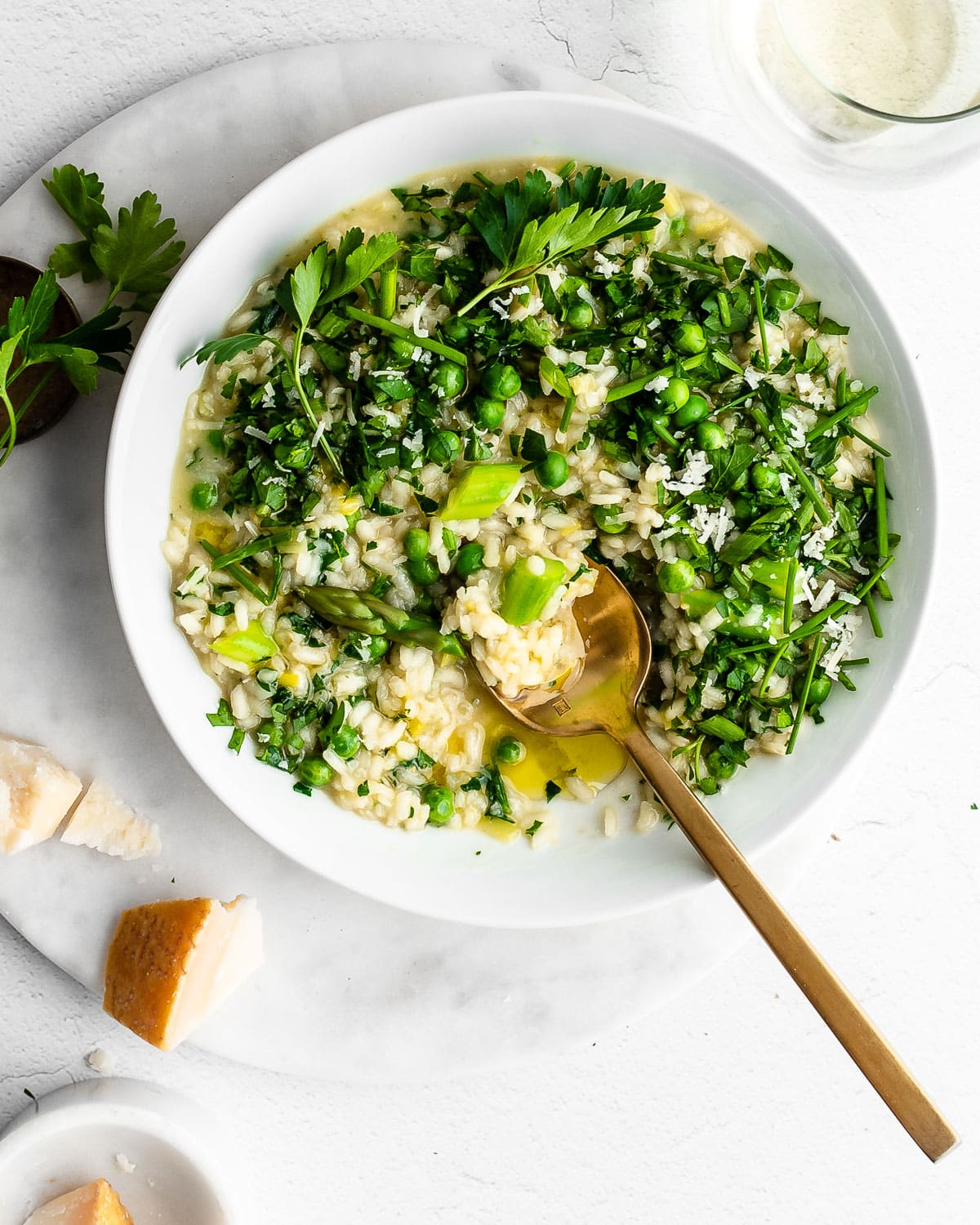
What is it?
Risotto Primavera means spring risotto. It is an Italian dish made by slowly cooking rice in broth, wine, and olive oil with springtime vegetables and herbs.
Why this recipe works
- This risotto recipe comes together in a single pot. That means fewer dishes to wash.
- It works both as a light main course and as a substantial side dish.
- You slowly stir broth into the risotto, resulting in a delicate creaminess.
- It’s loaded with fresh spring vegetables and aromatic herbs.
Key Ingredients
The ingredients for risotto primavera are simple and straightforward. Naturally, rice and good broth form the foundation of the recipe. In addition, you’ll need a good dose of dry white wine as well as plenty of fresh spring vegetables and herbs.
- Rice is the foundation of risotto. Italian varieties of short-grain white rice work the best. Look for carnarolli, arborio or vialone nano.
- White wine, added at the beginning of cooking, gives risotto primavera a delicate but complex note.
- Broth contributes flavor, protein, and body to risotto. While vegetable stock is passable, homemade chicken broth is perfect for this recipe, while this bone broth recipe is also a good choice.
- Aromatic vegetables give the risotto flavor. Both leeks and green onions are in season during spring, but you can also use spring onions as well as garlic scapes if you have them.
- Spring vegetables include both peas and asparagus.
- Parmesan cheese, stirred in at the very end, helps the risotto to thicken and come together. In addition, it lends a rich, savory flavor.
- Fresh herbs are abundant in spring, and this is a great way to showcase tender parsley and fresh chives.
Which wine should you use?
I prefer to use a naturally fermented, low-sugar white wine from Dry Farm Wines in this recipe. It's also free from a lot of the additives you'll find in conventional wine.

How to Make Risotto Primavera
Risotto primavera, just like this wild mushroom risotto recipe, is easy to make. You only need a single pot, and there are only a few simple, straightforward steps to follow. You start first by sauteing leeks and scallions in olive oil. Next, you stir in the rice. After cooking the rice in plenty of olive oil, add wine and broth until slowly but fully incorporated into the rice. At the very end of cooking, stir in the vegetables, herbs, and parmesan cheese.
- Saute the leeks and scallions in olive oil until fragrant and softened.
- Saute the rice until well-coated with olive oil. The tips of the grains should become translucent.
- Add the wine, and stir the rice until it fully absorbs the rice.
- Add the broth, about one-half cup at a time, until the rice fully absorbs the liquid.
- Stir the risotto slowly and frequently so that the rice softens and becomes creamy.
- When the rice is done, stir in the vegetables, herbs, and parmesan cheese.
Recipe Tips
Making risotto is forgiving. There’s a lot of room for mistakes, and plenty of opportunity to swap ingredients you may not like for others that you do. But there are a few tips you’ll want to keep in mind so that it turns out good every single time.
- The kind of rice you use matters. Medium-starch short-grain rice varieties work best. Long-grain rice and brown rice will not work as well.
- Keep your broth warm so that it incorporates into the rice easily. Some people keep the broth in a separate saucepan on the stove, but I usually microwave it and keep it in a glass jar or liquid measuring cup.
- Add the liquid ingredients slowly for creamy risotto. The rice will release its starch when you stir broth into it slowly, a little at a time.
- Stir slowly and often. The more you stir your rice, the more of its starch will incorporate into the broth, resulting in creamier risotto.
- Cook your veggies (except the leeks and onions) in advance. That means steaming the asparagus and peas, so they’re ready to incorporate into the rice right before you serve it.
- Frozen peas and asparagus work just fine for this recipe. But allow them to thaw before adding them to the pan.
What goes with risotto primavera?
Risotto primavera is a light, but substantial spring-inspired dish. It's equally good as a main course or as a side dish.
It works well as the centerpiece to a springtime lunch with a crisp herb salad dressed with a garlicky vinaigrette.
As a side dish, it tastes delicious when you serve it alongside grilled salmon, poached rockfish, or roasted chicken.
Get the Book
Our best-selling cookbook, Broth & Stock, guides you through making a dozen master recipes (for everything from bone broth to seafood stock) with guidance on how to use them to make amazing soups, stews, risottos, and more. It's everything you need to know about nourishing broths.
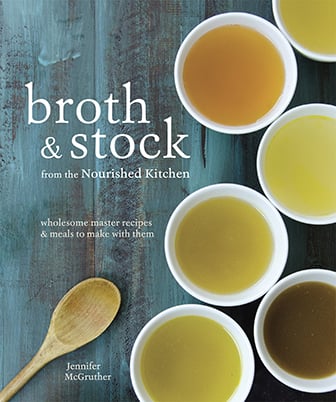
Variations + Substitutions
If you don’t have leeks or green onions, consider adding onions and garlic instead. They’re from the same botanical family, and you’re risotto primavera will be just as good.
Add thinly sliced garlic scapes in place of green onions. Garlic scapes are available in late spring, and they taste like a cross between green onions and garlic cloves. You can also ferment them or use them in this garlic scape pesto recipe.
Skip the parmesan cheese, and add a teaspoon of white miso paste. While miso may seem like an odd addition to an Italian-inspired dish, it has a sweet-umami flavor that works well in place of parmesan cheese.
Just about any herb works in this spring risotto recipe. Chive blossoms are a beautiful addition. Chervil, tarragon, and curly parsley are also nice. A small amount of fresh mint or dill can be a nice addition but may also overpower the other ingredients.
Love this recipe? Try these next.
Recipe Questions
How do I store it?
You can store leftover risotto in the fridge in a tightly sealed container for up to 3 days. While some risotto recipes last longer in the fridge (up to 5 days), spring vegetables and herbs in this risotto primavera recipe become a little lackluster after a few days.
How do I reheat leftover risotto?
Place it in a pan and add a few tablespoons of water or broth. Cover the pan and set it over medium-low heat, stirring occasionally until warmed through.
Can I freeze it?
No. This spring risotto recipe doesn’t freeze well. Freezing changes its texture and makes the rice mushy.

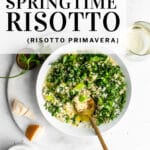
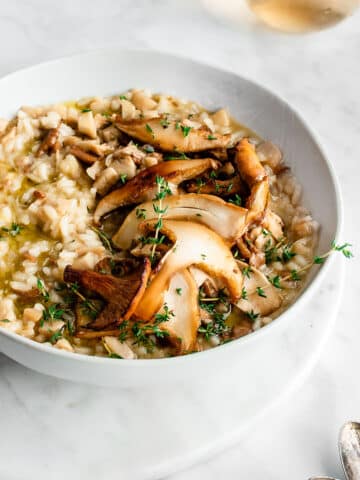
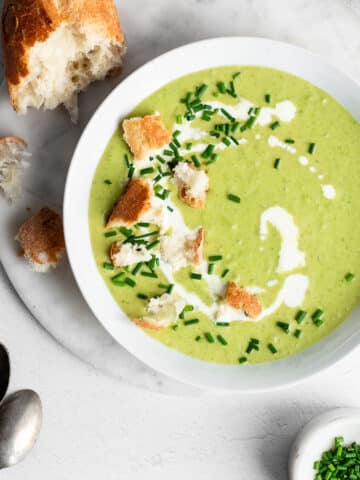
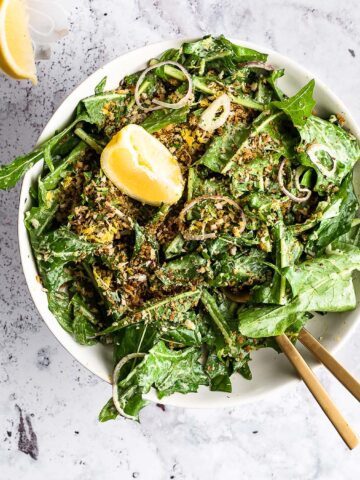
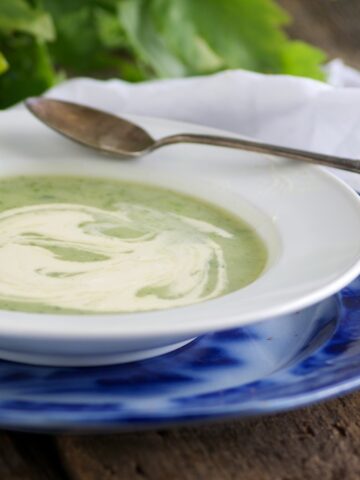
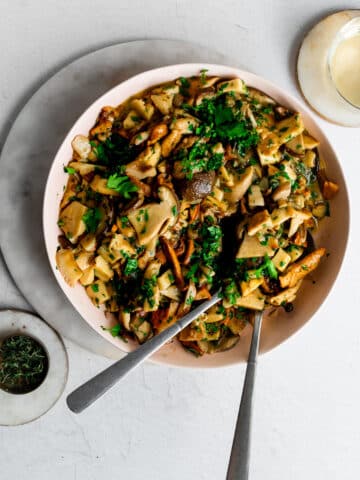
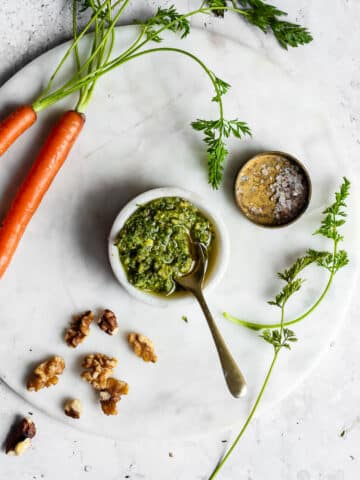
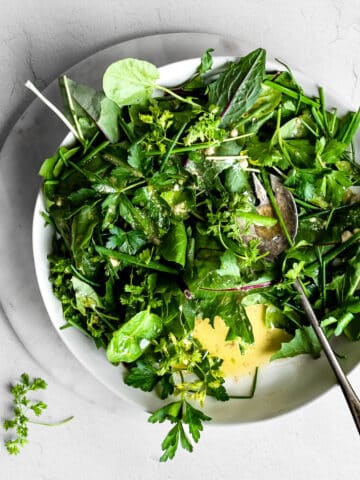
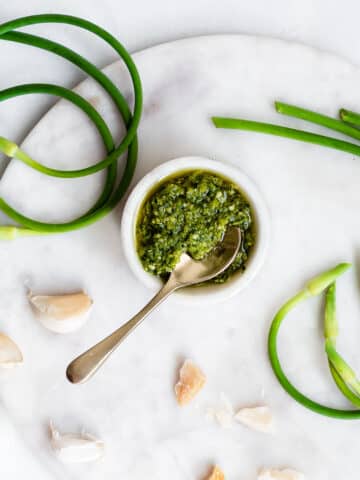
Aimee B. says
I got a good deal on asparagus and thought I'd try this recipe and the asparagus soup recipe you have on your website too. We really liked both, but this one is so good. I didn't have chives so I used chopped green onion instead and it was still tasty. Thanks.
Brushjl says
Excellent risotto. I didn't even both with a side salad, so many vegetables. Delicious!